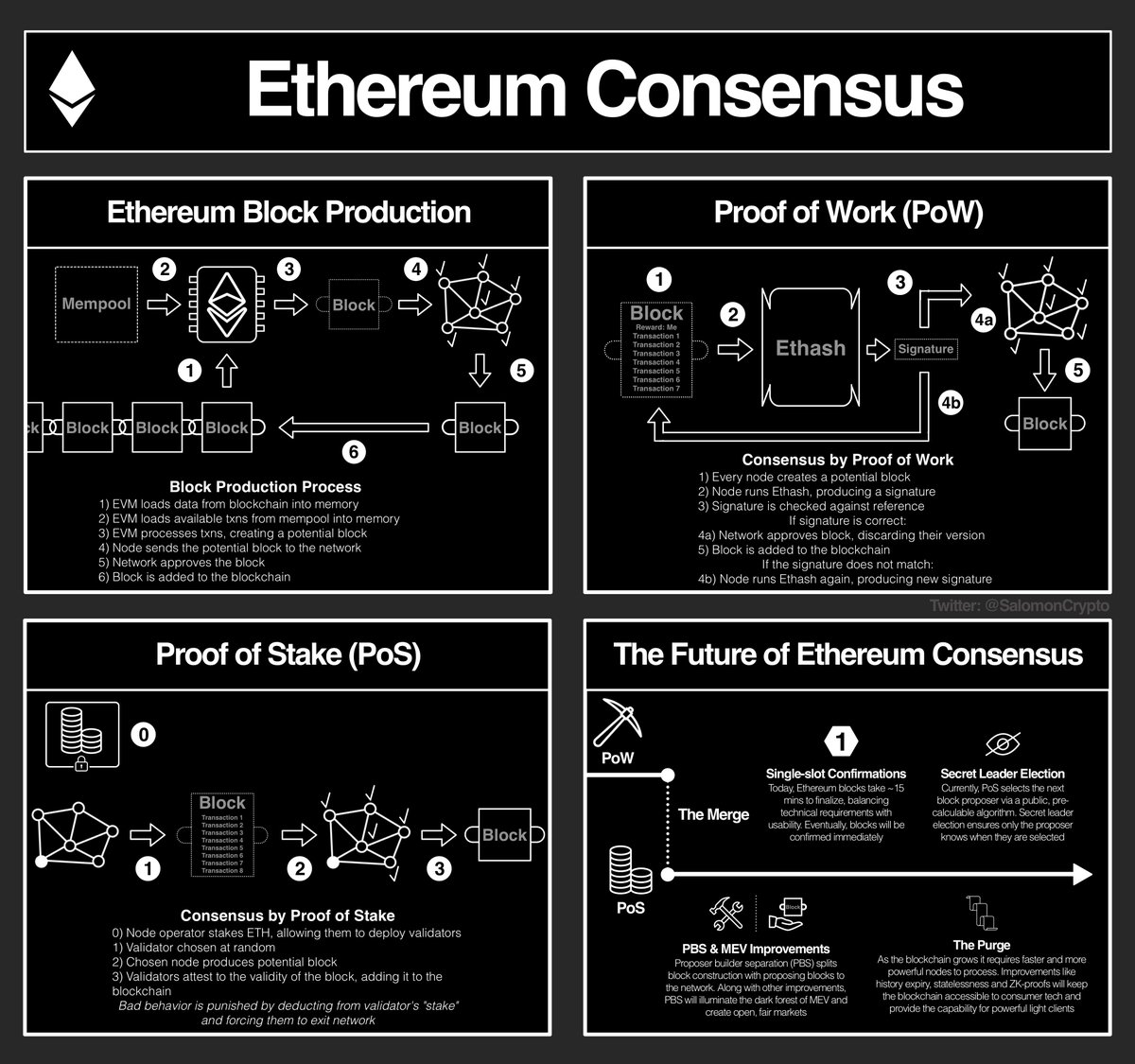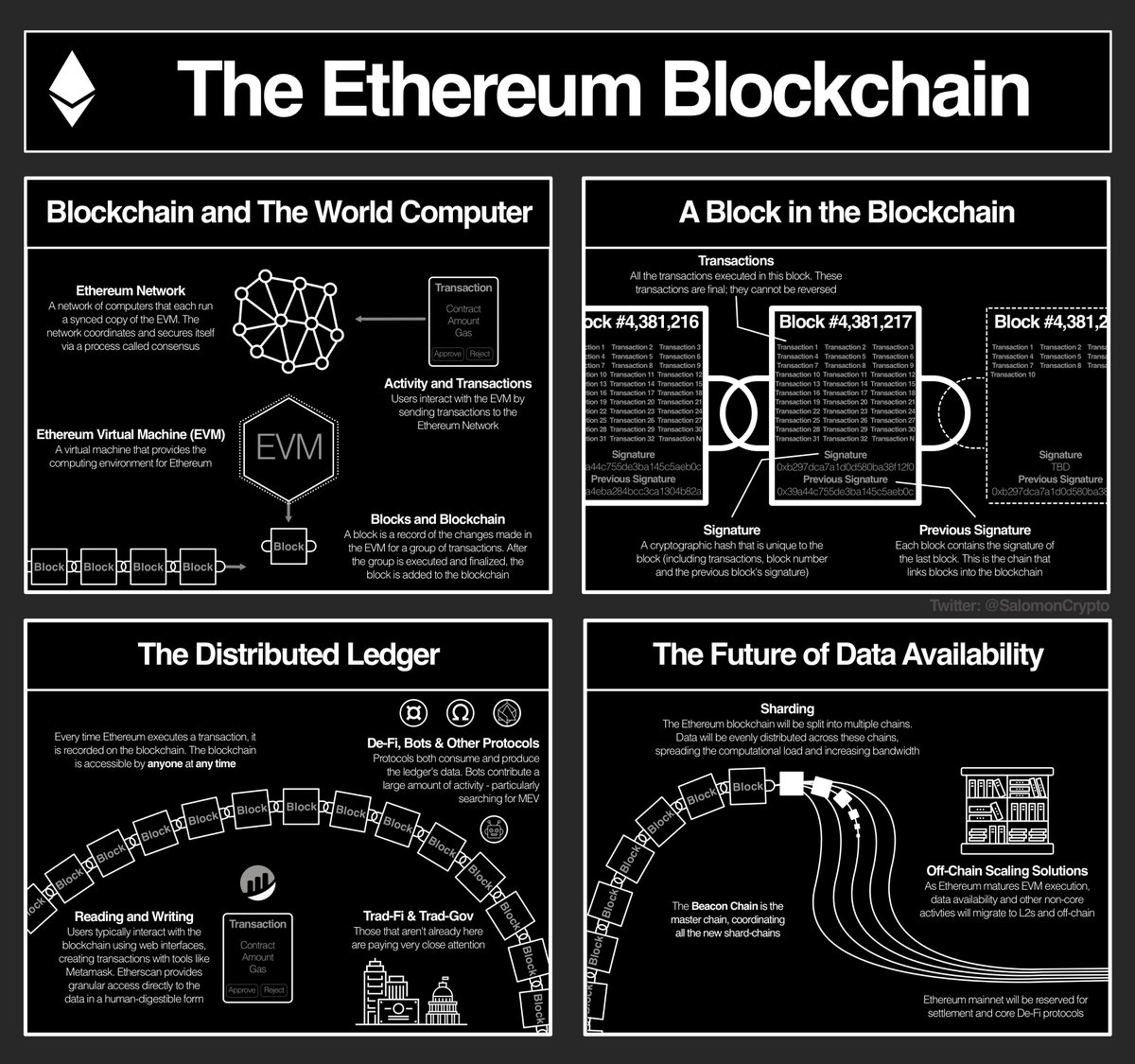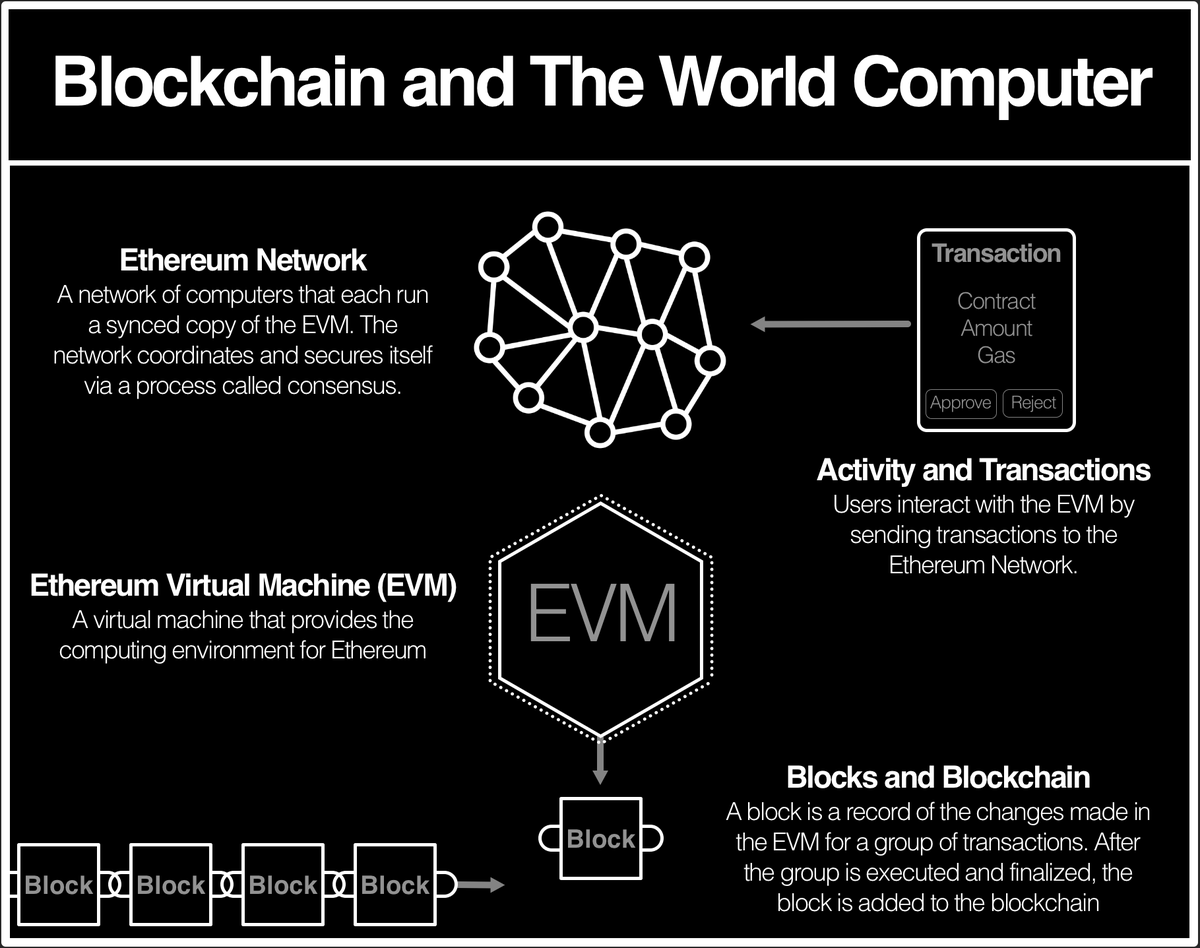
(1/19) Computer Science Fundamentals: Blockchain Computers, @Bitcoin and @ethereum
What is a blockchain computer and what makes it special? How did @VitalikButerin build on top of Bitcoin to create Ethereum? Why is Ethereum The World Computer?
This thread has answers!
What is a blockchain computer and what makes it special? How did @VitalikButerin build on top of Bitcoin to create Ethereum? Why is Ethereum The World Computer?
This thread has answers!

(2/19) @ethereum calls us all in different ways. Some are called by the decentralization, others to become unrealistically wealthy; everyone has their reasons.
Personally, I've heard the siren's song of The World Computer and am drawn the future we will build on top of it.
Personally, I've heard the siren's song of The World Computer and am drawn the future we will build on top of it.
https://twitter.com/SalomonCrypto/status/1554633476598484993
(3/19) But not all understand The World Computer metaphor. Crypto is so incredibly fast paced (and is inherently muddied with delusional visions of generational wealth) that it is easy to miss what makes @ethereum so special.
Let's go back to computer science basics.
Let's go back to computer science basics.
(4/19) A state machine is a mathematical model of computation with two major components:
- the state, the configuration of the system at a moment in time
- a transaction, the set of instructions to change the state
- the state, the configuration of the system at a moment in time
- a transaction, the set of instructions to change the state
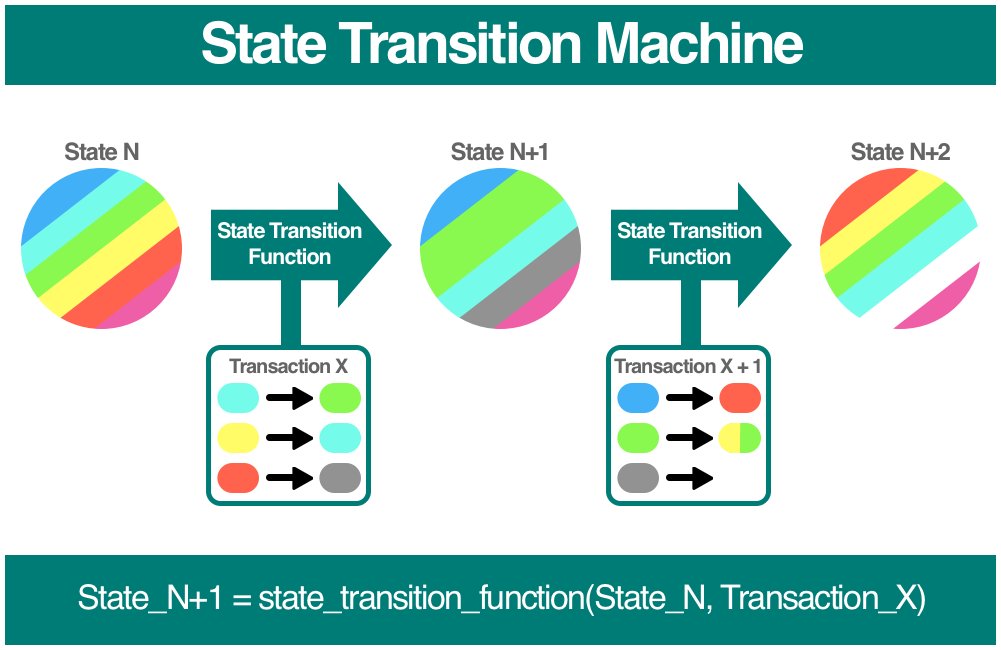
(5/19) The machine operates by applying a state transition function:
INPUTS: current state and the pending txn
OUTPUT: the new machine state.
In the example above, the txn describes which colors to change while the state transition function does the actual changing.
INPUTS: current state and the pending txn
OUTPUT: the new machine state.
In the example above, the txn describes which colors to change while the state transition function does the actual changing.
(6/19) The state transition machine model provides a simple framework for breaking down computation into a step-by-step process.
Now let us apply the concept to @Bitcoin.
Now let us apply the concept to @Bitcoin.
(7/19) At its core, @Bitcoin can be described as a state transition system that functions similarly to a simple banking system.
State - balance sheet
Transaction - request to move $X from A to $B
State Transition Function - reduce $X from A's account, add $X to B's account
State - balance sheet
Transaction - request to move $X from A to $B
State Transition Function - reduce $X from A's account, add $X to B's account
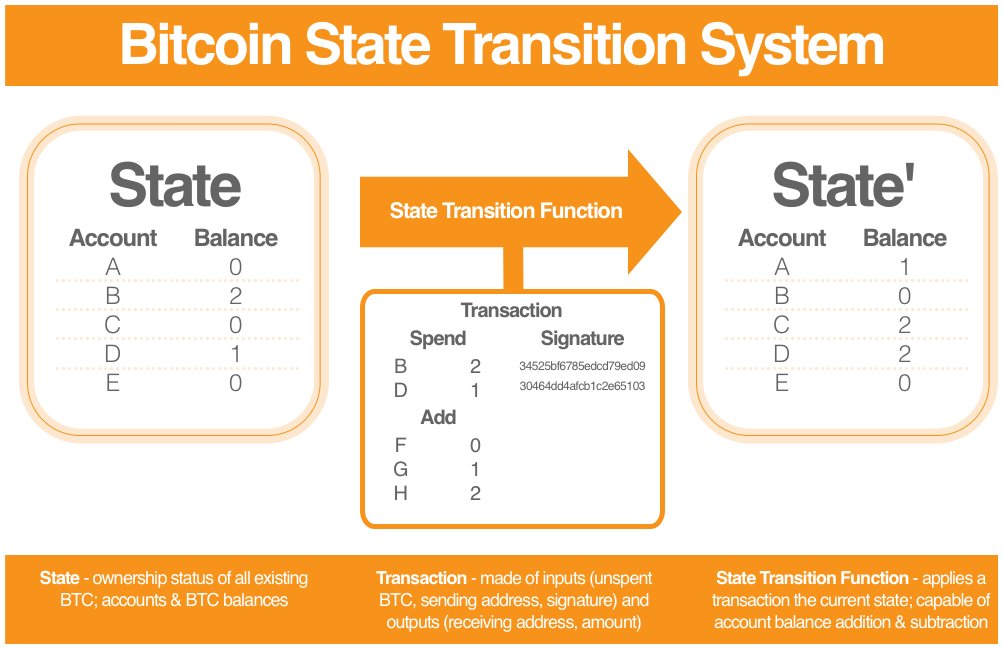
(8/19) While @Bitcoin can natively facilitate simple scripts, the language has some critical limitations. In practice, the vast majority of activity is the addition, subtraction and management of account balances.
(9/19) Put simply, @Bitcoin can be thought of as a specialized computer only capable of balance management.
When described as a state transition system, this specialization (limitation) can be seen in the basic and inflexible capabilities of the state transition function.
When described as a state transition system, this specialization (limitation) can be seen in the basic and inflexible capabilities of the state transition function.
(10/19) In 2009, Satoshi Nakamoto combined research in public key cryptography with innovations in consensus algorithms to produce @Bitcoin.
We've discussed the computational capabilities of Bitcoin - meh.
The impressive part is that it happens on a trust-less network.
We've discussed the computational capabilities of Bitcoin - meh.
The impressive part is that it happens on a trust-less network.
(11/19) We'll avoid the temptation to veer deeply into consensus in this thread - below is a resource for those with curiosity.
For now, consensus systems substitute a formal barrier of participation with an economic one. The result: a decentralized, transparent & fair platform.
For now, consensus systems substitute a formal barrier of participation with an economic one. The result: a decentralized, transparent & fair platform.
https://twitter.com/SalomonCrypto/status/1554339043168514050
(12/19) Think about it this way: blockchain computer are a state machine operated by a decentralized network of un-trusted computers.
@Bitcoin's state transition function is very basic: balance sheet management. The obvious question...
Can a state transition function do more?
@Bitcoin's state transition function is very basic: balance sheet management. The obvious question...
Can a state transition function do more?
(13/19) The answer is an emphatic YES! In fact, the right state transition function is capable of generalized computing!
The Turing Machine, named from mathematician Alan Turing, is a state machine capable (mathematically proven) of simulating any computer algorithm.
The Turing Machine, named from mathematician Alan Turing, is a state machine capable (mathematically proven) of simulating any computer algorithm.
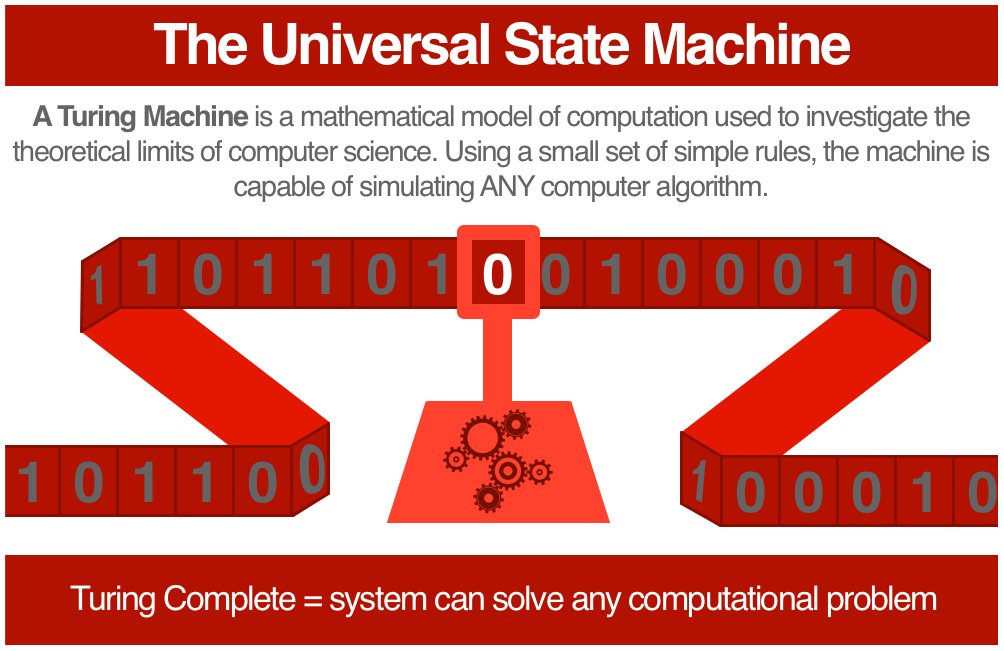
(14/19) Any computational system can be described via a state machine. A careful analysis of that state machine will check to see if the system can be used to simulate a Turing Machine.
If so, we call the system Turing-complete; it is capable of generalized computation.
If so, we call the system Turing-complete; it is capable of generalized computation.
https://twitter.com/SalomonCrypto/status/1543571618298880002
(15/19) @Bitcoin is the state machine for a decentralized banking system. Its scope and capabilities are limited by the language of the state transition function.
If Bitcoin is specialized, then @ethereum is generalized.
Solidity, the language of Ethereum, is Turing-complete.
If Bitcoin is specialized, then @ethereum is generalized.
Solidity, the language of Ethereum, is Turing-complete.
(16/19) @ethereum State Machine
State - status of all Ethereum accounts
Transaction - typical cryptocurrency transaction with an optional data field, accessed programmatically by smart contracts
State Transition Function - the code executed by the EVM
State - status of all Ethereum accounts
Transaction - typical cryptocurrency transaction with an optional data field, accessed programmatically by smart contracts
State Transition Function - the code executed by the EVM
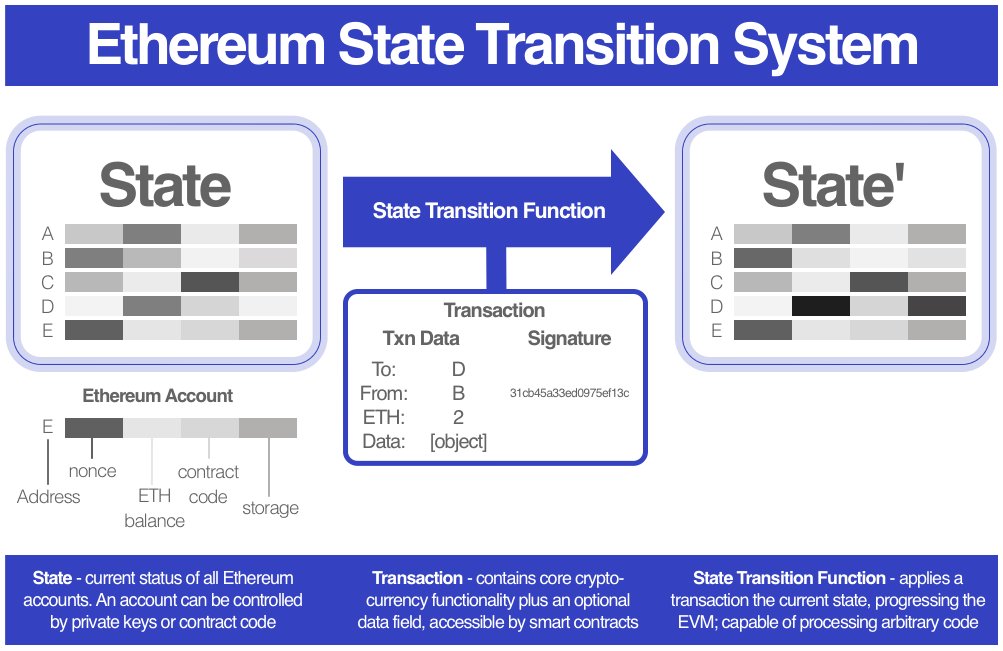
(17/19) @ethereum is much more complex than @Bitcoin, you can see it even in these simplified diagrams.
But take a step back and the picture is more clear: both Ethereum and Bitcoin are blockchain computers; Bitcoin is like a calculator, Ethereum like a Macbook.
But take a step back and the picture is more clear: both Ethereum and Bitcoin are blockchain computers; Bitcoin is like a calculator, Ethereum like a Macbook.
(18/19) In summary, @Bitcoin and @ethereum should be understood as the next iteration in computing technology.
First we had personal computing. Then we had cloud computing.
Bitcoin is the first, specialized example of shared computing.
Ethereum is The World Computer.
First we had personal computing. Then we had cloud computing.
Bitcoin is the first, specialized example of shared computing.
Ethereum is The World Computer.
(19/19) Still having trouble wrapping your head around it? Maybe you're an audio learner!
Check out this clip from my interview with @flywheelpod, I'll walk you through the same ideas.
Check out this clip from my interview with @flywheelpod, I'll walk you through the same ideas.
https://twitter.com/SalomonCrypto/status/1538936332835180544
Like what you read? Help me spread the word by retweeting the thread (linked below).
Follow me for more explainers and as much alpha as I can possibly serve.
Follow me for more explainers and as much alpha as I can possibly serve.
https://twitter.com/SalomonCrypto/status/1555684780921892864
• • •
Missing some Tweet in this thread? You can try to
force a refresh




